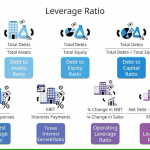In today’s volatile financial landscape, experienced investors are constantly seeking ways to diversify their portfolios beyond traditional asset allocation. Alternative investments have emerged as an enticing option for those looking to venture beyond stocks, bonds, and cash. These alternative investments offer the potential for higher returns, lower volatility, and increased diversification.
Whether it’s real estate, private equity, hedge funds, or venture capital, alternative investments provide access to markets and opportunities that may not be available through traditional investment avenues. With the potential for non-correlation to traditional market movements, these investments can be used to reduce portfolio risk and generate greater overall returns.
However, venturing into alternative investments requires a keen understanding of the risks and complexities involved. Additionally, due diligence, research, and expertise are crucial to identify the most suitable alternative investment strategies for each individual portfolio.
In this article, we will explore the world of alternative investments and delve into the strategies that experienced investors are using to enhance their portfolios.
From understanding the various asset classes to evaluating risk-return profiles, this article will provide insights into how alternative investments can be incorporated into a diversified investment strategy. So, join us as we go beyond traditional asset allocation and discover the potential benefits of alternative investments for experienced portfolios.
Traditional Asset Allocation vs. Alternative Investments
When it comes to traditional asset allocation, investors typically allocate their portfolios across different asset classes such as stocks, bonds, and cash. While this approach can provide diversification to some extent, it may not be enough to truly safeguard against market volatility and generate significant returns. This is where alternative investments come into play.

Alternative investments, as the name suggests, offer an alternative to traditional asset classes. These investments can include real estate, private equity, hedge funds, venture capital, commodities, and precious metals. By diversifying into these alternative asset classes, experienced investors can potentially enhance their portfolios’ risk-return profiles and reduce their exposure to traditional market movements.
One of the key benefits of including alternative investments in a portfolio is their potential for non-correlation with traditional asset classes. This means that alternative investments may not move in tandem with the stock market or other traditional investments, providing a hedge against market downturns. This non-correlation can help smooth out portfolio returns and reduce overall volatility.
Moreover, alternative investments have the potential to deliver higher returns compared to traditional asset classes, albeit with higher risks. By exploring alternative investment opportunities, experienced investors can tap into niche markets, unique strategies, and emerging industries that may have the potential for significant growth and returns.
Types of Alternative Investments
Now, let’s take a closer look at some of the most popular types of alternative investments that experienced investors are incorporating into their portfolios.
Real Estate as an Alternative Investment
Real estate has long been regarded as a tangible and valuable asset class. Investing in real estate can provide investors with regular income through rental yields, potential capital appreciation, and the added advantage of diversification. From residential properties to commercial buildings, real estate offers a wide range of investment opportunities.
In recent years, real estate crowdfunding platforms have gained popularity, allowing investors to pool their resources and invest in real estate projects collectively. This democratization of real estate investing has opened up avenues for investors to access potentially lucrative real estate opportunities with lower entry barriers.
Investing in real estate can take various forms, including direct ownership of rental properties, real estate investment trusts (REITs), real estate crowdfunding, and private equity real estate funds.
Direct ownership of rental properties allows investors to earn rental income and benefit from property appreciation. REITs, on the other hand, provide liquidity and diversification by investing in a portfolio of income-generating properties. Real estate crowdfunding platforms enable investors to participate in specific real estate projects with lower capital requirements, while private equity real estate funds offer access to institutional-quality properties with potentially higher returns.
When considering real estate as an alternative investment, investors should carefully evaluate factors such as location, property type, market trends, and potential risks. Conducting thorough due diligence on the property, understanding the local real estate market dynamics, and assessing the financial performance of the investment are critical steps in making informed decisions. Additionally, investors should consider the liquidity, management fees, and tax implications associated with their chosen real estate investment vehicle.
It’s essential to recognize that real estate investments come with inherent risks, including property market fluctuations, vacancy rates, interest rate changes, and unexpected expenses. Moreover, managing and maintaining physical properties require time, effort, and capital, which may not align with every investor’s preferences or expertise. Therefore, thorough risk assessment and a clear investment strategy are crucial for success in real estate investing.
Real estate presents itself as a compelling alternative investment option, offering the potential for steady income, long-term appreciation, and portfolio diversification. However, it is essential for investors to conduct diligent research, seek professional advice, and carefully assess the associated risks before committing to real estate investments. With the right approach and understanding of the market dynamics, real estate can be a valuable addition to an investment portfolio, providing stability and potential growth in the long run.
Private Equity and Venture Capital Investments
Private equity and venture capital investments involve investing in privately held companies or startups. These investments offer the potential for high returns but also come with significant risks. Private equity investments typically involve investing in mature companies, while venture capital investments focus on early-stage or high-growth startups.
Experienced investors often allocate a portion of their portfolios to private equity and venture capital to benefit from the potential upside of investing in innovative companies. These investments can provide exposure to cutting-edge technologies, disruptive business models, and growth opportunities that may not be available through traditional investments.
Private equity and venture capital investments are sophisticated financial strategies that have gained prominence in the investment landscape. These alternative investments involve providing capital to companies that are not publicly traded in exchange for an ownership stake.
Private equity typically focuses on mature companies with established cash flows, aiming to restructure or enhance their operations to drive profitability. On the other hand, venture capital targets early-stage or high-growth potential firms, often in the technology or biotechnology sectors, with the goal of achieving substantial returns upon a successful exit, such as an initial public offering (IPO) or acquisition.
Investing in private equity and venture capital offers the potential for high returns, portfolio diversification, and access to innovative and promising businesses. Furthermore, these investments provide investors with an opportunity to actively participate in the growth and development of non-publicly traded companies, potentially adding strategic value through industry knowledge, operational expertise, and networking.
However, it’s crucial to recognize the inherent risks associated with private equity and venture capital investments. These risks include illiquidity, as investments are typically locked up for several years, and the potential for significant loss if the invested companies fail to achieve anticipated growth or profitability. Additionally, due diligence and ongoing management of these investments require specialized expertise and resources, making them suitable for sophisticated and high-net-worth investors.
When considering private equity and venture capital investments, investors should carefully evaluate the track record and expertise of the investment managers, the quality of the investment opportunities, and the alignment of the investment strategy with their overall financial objectives and risk tolerance. Understanding the terms of the investment, including fees, carried interest, and exit strategies, is crucial for making informed decisions.
Private equity and venture capital investments offer unique opportunities for investors to access non-publicly traded companies and participate in their growth and success. While these investments can yield substantial returns and diversify a portfolio, they require a thorough understanding of the risks and complexities involved.
Investors should seek professional advice and conduct comprehensive due diligence before pursuing private equity and venture capital opportunities, ensuring that these investments align with their overall investment goals and risk profile.
Hedge Funds and Managed Futures
Hedge funds and managed futures are alternative investment vehicles that aim to generate positive returns regardless of market conditions. These funds often employ complex investment strategies, such as long-short strategies, derivatives, and leverage, to enhance returns and manage risk.
Hedge funds typically have more flexibility than traditional investment funds, allowing them to invest in a wide range of assets and employ various investment techniques. Managed futures, on the other hand, focus on trading futures contracts across different asset classes, including commodities, currencies, and interest rates.
Hedge funds and managed futures are sophisticated investment vehicles that cater to high-net-worth individuals and institutional investors seeking alternative strategies to traditional investments. Hedge funds employ diverse strategies, including long/short equity, event-driven, and global macro, aiming to generate absolute returns while minimizing market risk.
Managed futures, on the other hand, focus on trading futures contracts across various asset classes, such as commodities, currencies, and interest rates, using systematic and trend-following strategies to capture market trends.
Investing in hedge funds and managed futures offers the potential for portfolio diversification, risk management, and non-correlated returns to traditional asset classes. These investments often have low correlations to stocks and bonds, providing a hedge against market volatility and economic uncertainty. Moreover, hedge funds and managed futures may offer the potential for capital preservation and inflation protection, especially in volatile market environments.
However, it’s essential to recognize the unique characteristics and risks associated with hedge funds and managed futures. These investments typically involve higher fees, complex strategies, and limited liquidity, as investors may face lock-up periods and redemption restrictions.
Furthermore, due diligence and ongoing monitoring of hedge fund and managed futures managers are crucial, as these strategies require specialized expertise and resources to navigate dynamic market conditions effectively.
When considering hedge funds and managed futures, investors should carefully evaluate the track record, investment approach, and risk management practices of the fund managers.
Understanding the fee structure, performance benchmarks, and transparency of these investments is essential for making informed decisions. Additionally, investors should assess the alignment of these strategies with their overall investment objectives, risk tolerance, and portfolio diversification needs.
Hedge funds and managed futures can be valuable components of a sophisticated investment portfolio, offering diversification, risk management, and potential for non-correlated returns. However, these investments require a thorough understanding of their complexities, risks, and suitability for individual investment goals.
Commodities and Precious Metals
Investing in commodities and precious metals, such as gold and silver, can provide diversification benefits and act as a hedge against inflation. Commodities, including energy, agricultural products, and metals, often exhibit low or negative correlation with traditional asset classes, making them attractive for portfolio diversification.
Precious metals, particularly gold and silver, have historically been considered safe-haven assets during times of economic uncertainty. These metals can act as a store of value and provide a hedge against potential currency devaluation or geopolitical risks.
Commodities and precious metals investments play a crucial role in diversifying investment portfolios and serving as hedges against inflation and currency devaluation. Commodities encompass a broad range of tangible assets, including energy, metals, agriculture, and other raw materials, while precious metals primarily refer to gold, silver, platinum, and palladium.
These investments offer unique characteristics that can enhance a portfolio’s risk-adjusted returns and provide protection against economic uncertainties.
Investing in commodities and precious metals can be achieved through various means, including direct ownership of physical assets, commodity futures contracts, exchange-traded funds (ETFs), and mining company stocks.
Direct ownership of physical commodities and precious metals allows investors to possess tangible assets with intrinsic value, serving as a store of wealth and a potential hedge against currency fluctuations.
Commodity futures contracts provide exposure to price movements in the commodity markets, allowing investors to speculate on future price changes or mitigate price risks for commercial purposes. ETFs offer a convenient and liquid way to invest in commodities and precious metals, providing diversified exposure to the underlying assets.
Additionally, investing in mining company stocks can offer leverage to commodity prices and the potential for dividend income.
When considering commodities and precious metals investments, investors should carefully assess factors such as supply and demand dynamics, geopolitical influences, global economic conditions, and currency movements.
Understanding the specific drivers of each commodity and the factors that impact precious metals prices is essential for making informed investment decisions. Moreover, investors should evaluate the correlation of these assets with traditional investments, as well as their role in providing portfolio diversification and risk mitigation.

It’s important to recognize that commodities and precious metals investments come with inherent risks, including price volatility, geopolitical factors, and regulatory changes. Additionally, specific commodity-related risks, such as weather patterns affecting agricultural products or geopolitical tensions impacting energy prices, should be carefully considered.
Furthermore, the storage and insurance costs associated with physical ownership of commodities and precious metals, as well as the complexities of futures and options trading, require a thorough understanding and risk management approach.
Commodities and precious metals investments offer valuable opportunities for portfolio diversification, inflation hedging, and exposure to global economic trends. However, due diligence, risk assessment, and a clear investment strategy are crucial for success in these alternative assets.
Risks and Considerations when Investing in Alternative Assets
While alternative investments offer potential benefits, they also come with their own set of risks and considerations. It’s important for experienced investors to carefully evaluate these factors before incorporating alternative assets into their portfolios.
Some of the key risks associated with alternative investments include illiquidity, higher fees, lack of transparency, and regulatory risks. Alternative investments often have longer lock-up periods, meaning that investors may not be able to access their funds for a certain period of time. Additionally, alternative investments may have higher management fees compared to traditional investments due to their specialized nature.
Due diligence is crucial when investing in alternative assets. Investors should thoroughly research the investment strategy, track record, and expertise of the fund managers or investment professionals. Understanding the risks and potential returns of each alternative investment is essential for making informed investment decisions.
Conclusion: Diversify Your Portfolio with Alternative Investments
In conclusion, alternative investments can provide experienced investors with a means to diversify their portfolios beyond traditional asset allocation. Whether it’s real estate, private equity, hedge funds, or commodities, these alternative investments offer the potential for higher returns, lower volatility, and increased diversification.
However, it’s important to approach alternative investments with caution and conduct thorough due diligence. Understanding the risks, considering the fees, and evaluating the expertise of investment professionals are crucial steps in incorporating alternative investments into a diversified investment strategy.
By going beyond traditional asset allocation and exploring alternative investment opportunities, experienced investors can potentially enhance their portfolios’ risk-return profiles and tap into unique market opportunities. So, take the time to understand the world of alternative investments and consider how they can benefit your portfolio.






